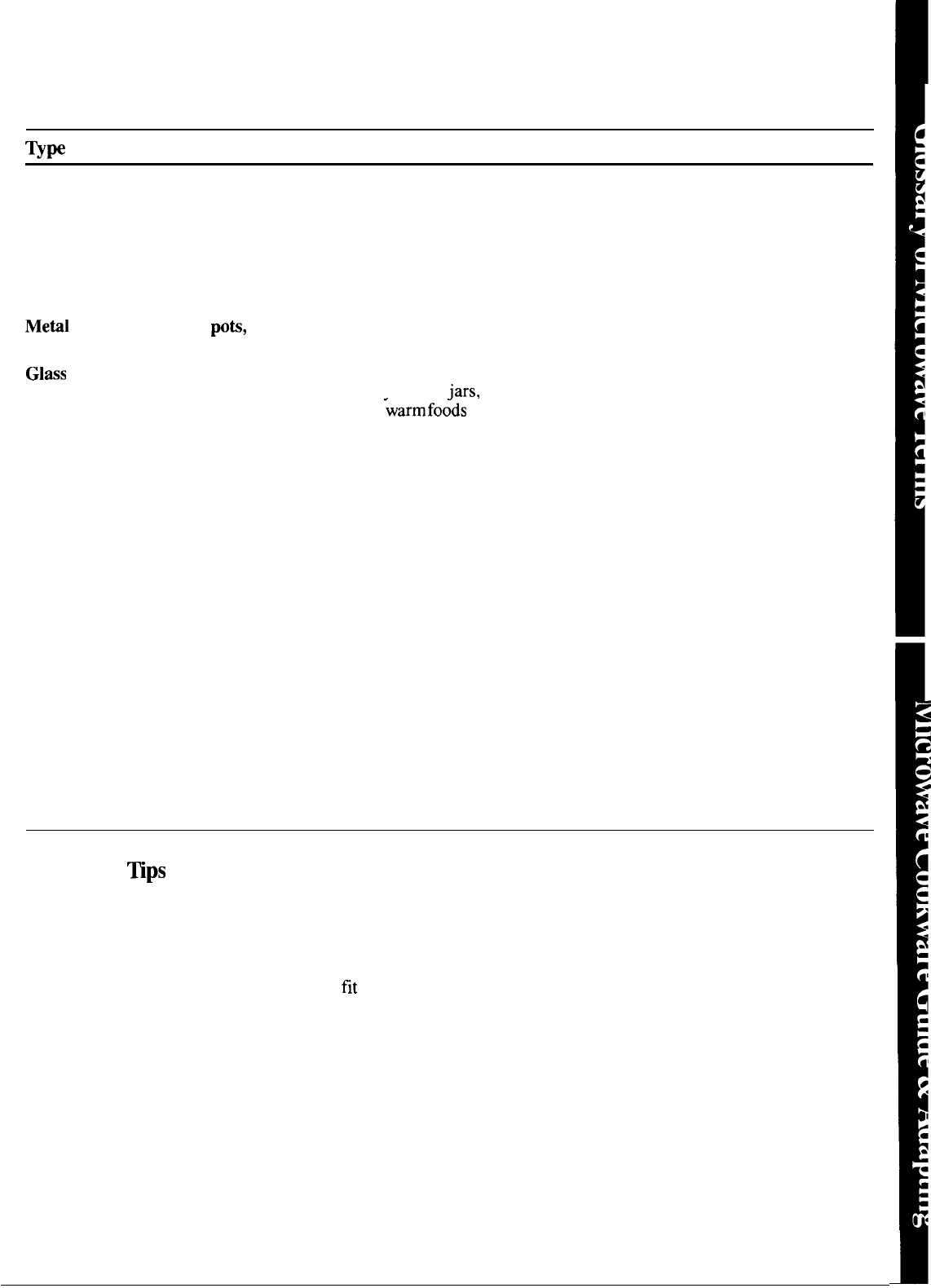
Microwave Cookware Guide &Microwave Adapting
Foil-lined paper bags and boxes
Foil baking trays
Aluminum foil
Metil or partially metal pok, pans,
thermometers, skewers and twist ties
Glass
jars and bottles
Microwave plastics
Paper or Styrofoam plates and cups
Oven glass and ceramic
Dinnerware
Paper towels, paper napkins and
wax paper
Plastic wrap, cooking bags, boil-in
bags and storage bags
Paperboard trays used for frozen
entrees and dinners
Plastic trays and plates used for frozen
entrees and dinners
Straw, wicker and wood
~p
of Cookware
Microwave Uses
Avoid using.
You can use foil trays that are no higher than 3/4-in. (Foil or metal will
reflect microwaves and cause uneven heating. ) Arcing can occur if foil is
closer than 1 inch to oven walls.
Use for shielding.
Do not use. Microwave-safe thermometers and skewers are available.
Generally, glass jars can be used to warm food. However, do not heat
baby food in
iars,
even without lids, because food will heat unevenly. Do
not
“warm
fo~ds
in narrow-necked bottles because pressure can build up.
Cooking and heating.
Heating and serving of foods and beverages. Styrofoam will melt if food
is too hot or if food is cooked for a long time.
Cooking and heating.
Heating and some cooking. Follow dinnerware manufacturer’s
recommendations. Avoid using dishes with metal trim.
Absorbing moisture, and preventing spatters. Heating and serving of
sandwiches or appetizers. Light covering to hold in steam. Do not use
paper towels that have synthetic fibers, such as nylon, woven into them.
Synthetic fibers may cause the towel to ignite. Avoid using recycled paper.
Covering to hold in steam (wrap). Cooking (cooking and boil-in bags).
Heating (storage bags).
Cooking and heating.
Cooking and heating.
Warming.
Cookware
~ps
●
Always check the cookware manufacturer’s
recommendations before using any cookware
in the oven.
●
Before purchasing cookware or preparing food in
cookware, check its size to make sure it will
fit
in the oven.
13


















